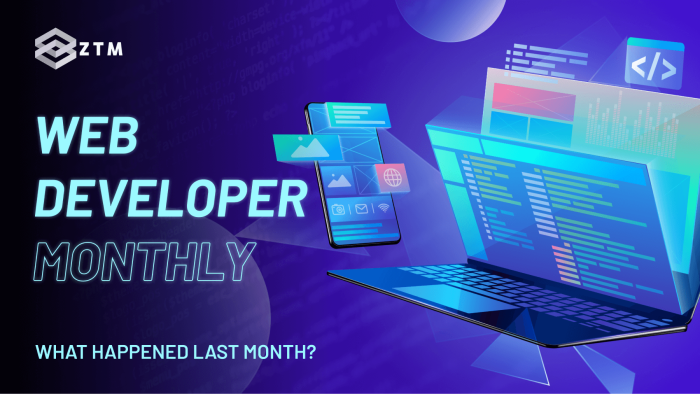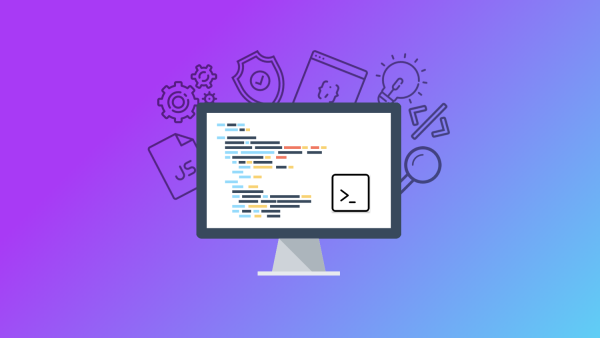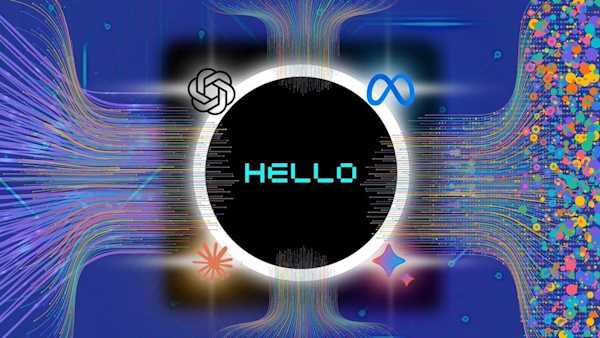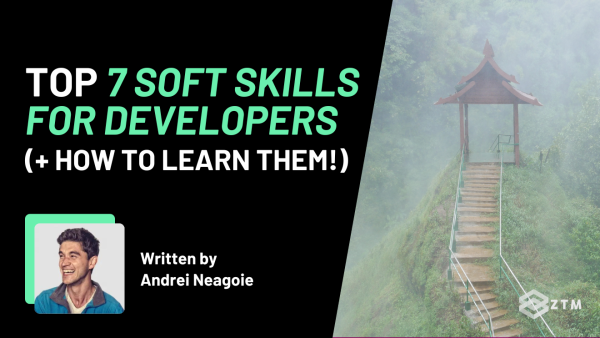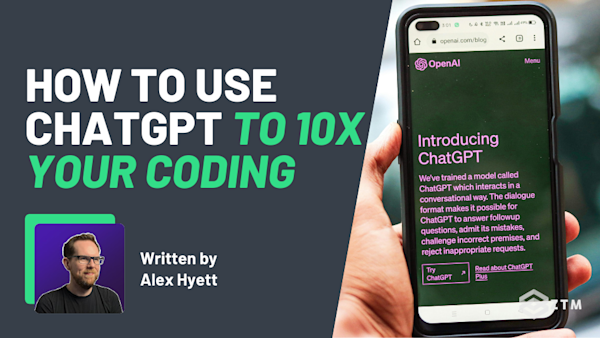Welcome to the 78th issue of Web Developer Monthly!
If it’s your first time here, welcome, I like you already. If you want the full back story on the newsletter, head here.
The quick version: I curate and share the most important articles, news, resources, podcasts, and videos from the world of web and software development.
Think the Pareto Principle (80/20 rule) meeting the programming world. I give you the 20% that will get you 80% of the results.
If you're a long time reader, welcome back old friend.
Alright, let's not waste any valuable time and jump right into this month's updates.
Here's what you missed in December 2024 as a Web Developer…
Deno vs Oracle 🦕
I feel like every year the story of JavaScript trademark being owned by Oracle comes up. This year, Deno wants to take control of the situation.
On November 22, 2024, Deno formally filed a petition with the USPTO to cancel Oracle’s trademark for “JavaScript.” This marks a pivotal step toward freeing “JavaScript” from legal entanglements and recognizing it as a shared public good. You can sign the petition.
Fun fact, JavaScript was released December 4th, 1995, so it had its birthday this month.
Here is the throwback announcement of the JavaScript launch!
A New Web Dev Stack 🐦🔥
An interesting new tech stack of Web Development, because there does seem to be a React fatigue going on in the space.
The author explores the new tech stack: Go+HTMX+Templ this year, after deciding to give up on using React on any personal projects: Dependency management fatigue, or why I forever ditched React for Go+HTMX+Templ.
React News 💎
React... it's still mostly everyone's favourite library. What crazy things have they been up to?
-
React v19 with the new React Compiler is finally here. All the rage for the hip React developers. Here is how the new React Compiler performs on real code.
-
When building React applications, fetching data is a common task. In this article, you'll explore different data fetching patterns for React components across client and server.
-
If you have worked with a production website that actually cares about Google scores (for ranking), then you have seen that Interaction-to-Next-Paint (INP), is one of the hardest scores to improve on the page speed performance. It's one of the new metrics they use and it's a tough one. Luckily in this guide you’ll go in-depth on which patterns you can use to improve INP when using React.
-
A look at some of the React tech stacks to use in 2025. The options are endless so this is one popular and common way to go about it.
State of JS Results! 🏆
The annual State of JS survey results are out!
It's not what it used to be. The number of responses was at an all time low. It feels like this survey is heavily skewed towards React developers but it's still worth a look to see what people are saying.
Plus they mention ZTM as a top resource to use for learning so I can't hate on them too much 😛.
Vite, like last year, seems to be one of the few bright spots in the ecosystem that is growing and it seems like Angular is gaining back in popularity.
7 Databses in 2025 📼
A fun little article to show you were we are in the Database industry in 2025. By no means is it exhaustive, but it shows you some of the different databases that are worth a look if you are interested.
Egoless Engineering 🎭
An interesting article that will make you think: Egoless Engineering.I liked these comments from a reader:
Really resonated with this, reminded me of the journey I went on over the course of my dev career. By the end, my advice for every manager was roughly:
-
Don't add process just for the sake of it. Only add it if seriously needed.
-
Require ownership all the way to prod and beyond, no matter the role. (Turns out people tend to really like that.)
-
Stop making reactive decisions. If something bad happened on a total, extremely unlikely lark, don't act like it's going to happen again next week.
-
Resist the urge to build walls between people/teams/departments. Instead, build a culture of collaboration (Hard and squishy and difficult to scale? Yup. Worth it? Absolutely.)
-
Never forget your team is full of actual humans.
Cognitive Load Is The Key 🧘
There are so many buzzwords and best practices out there, but most of them have failed. We need something more fundamental, something that can't be wrong.
Sometimes we feel confusion going through the code. Confusion costs time and money. Confusion is caused by high cognitive load. It's not some fancy abstract concept, but rather a fundamental human constraint. It's not imagined, it's there and we can feel it: Cognitive Load.
This article makes a very good point on how we should think about software and code and I tend to agree. It also reminds me of this quote I read once:
The best way to achieve a good abstraction is to recall what the word meant before computer science: namely, something closer to generalization.
In computing, we emphasize the communicational (i.e. interface) aspects of our code, and, in this respect, tend to focus on an "abstraction"'s role in hiding information. But a good abstraction does more than simply hide detail, it generalizes particulars into a new kind of "object" that is easier to reason about.
If you keep this in mind, you'll realize that having a lot of particulars to identify shared properties that you can abstract away is a prerequisite.
The best abstractions I've seen have always come into being only after a significant amount of particularized code had already been written. It is only then that you can identify the actual common properties and patterns of use.
Contrarily, abstractions that are built upfront to try and do little more than hide details or to account for potential similarities or complexity, instead of actual already existent complexity are typically far more confusing and poorly designed.
New Libraries and Tools 🗿
There are a ton of shiny new libraries and tools every month which is why I have this dedicated section for them...
-
Astro v5.0 is out! For those that don't know, Astro is the web framework for building content-driven websites including blogs, marketing, and e-commerce. If you need a website that loads fast with great SEO, then Astro is for you... or so they say.
-
NextJS v15.1 is also out with the new React v19 under the hood. Check out the changes here. Yes, our instructor team is actively reviewing and working on updates to our related courses 🙂.
-
Boa v0.20 is out! Boa JS is an ECMAScript engine written in Rust.
News Around the World 🗺
-
Big news from the chess world: Gukesh becomes the youngest chess world champion in history with an epic final battle.
-
Good cultural news: Notre Dame is reopening its doors for the first time since a fire in 2019 nearly destroyed Paris’ beloved 12th-century cathedral. Apparently it's more beautiful than ever.
Big Tech News 🏢
-
This is probably the coolest A.I. product to come out this month. It's the first step towards spatial intelligence: an AI system that generates 3D worlds from a single image. This lets you step into any image and explore it in 3D... check out the demo here.
-
Not to be outdone in the above story, Google Deepmind team came out with something really impressive too: Genie 2, a foundation world model capable of generating an endless variety of action-controllable, playable 3D environments for training and evaluating embodied agents. Based on a single prompt image, it can be played by a human or AI agent using keyboard and mouse inputs. They also announced Veo 2, their state-of-the-art video generation model.
-
Big news out of OpenAI is the new o3 system which isn't publicly available yet is trained on the ARC-AGI-1 Public Training set. A high-compute (172x) o3 configuration scored 87.5%. This is a surprising and important step-function increase in AI capabilities, showing novel task adaptation ability never seen before in the GPT-family models. For context, ARC-AGI-1 took 4 years to go from 0% with GPT-3 in 2020 to 5% in 2024 with GPT-4o. All intuition about AI capabilities will need to get updated for o3. This is a big deal, and you need to read about it here.
-
OpenAI also released ChatGPT Pro for businesses (it's expensive). Why? A comment on this post from a hackernews user explains it best:
OpenAI is racing against two clocks: the commoditization clock (how quickly open-source alternatives catch up) and the monetization clock (their need to generate substantial revenue to justify their valuation).
The ultimate success of this strategy depends on what we might call the enterprise AI adoption curve - whether large organizations will prioritize the kind of integrated, reliable, and "safe" AI solutions OpenAI is positioning itself to provide over cheaper but potentially less polished alternatives.
This is strikingly similar to IBM's historical bet on enterprise computing - sacrificing the low-end market to focus on high-value enterprise customers who would pay premium prices for reliability and integration.
The key question is whether AI will follow a similar maturation pattern or if the open-source nature of the technology will force a different evolutionary path.
-
Weather has been one of the most important and valuable datapoints for the world. Weather prediction was one of the main uses for computers and complex computation. Now, Google says AI weather model masters 15-day forecast.
-
Google had a busy month because it has even more announcements: they launched Gemini 2.0. According to them, it's ready for the agentic era. If you want to play around with some of their AI tools, I recommend this one which I think has the biggest potential: https://aistudio.google.com/live.
-
US lawmakers tell Apple, Google to be ready to remove TikTok from app stores Jan. 19. We'll see if this happens or not.
Completely useless to your career but still great 🙃
-
Between 2009 and 2012, iPhones had a built-in "Send to YouTube" button in the Photos app. Many of these uploads kept their default IMG_XXXX filenames, creating a time capsule of raw, unedited moments from random lives. Inspired by this, this one person made a bot that crawled YouTube and found 5 million of these videos. Watch them, ordered randomly.
-
Enjoy booking the rest of the day off of work so you can just play with this amazing website and look at world maps over history.
-
SmartHome, a text based mysterious adventure.
Best Resource of the Month ✅
To end the year, I have a great resource for you this month.
As you know, AI was a big theme of the year and there was no shortage of innovation in this field, but also paranoia around what this means for humans in the workplace. The resource this month explains where we are at, and the biggest problem of AI.
The 70% problem: Hard truths about AI-assisted coding.
Every generation has to learn that “there is no silver bullet”. AI is a fabulous tool that is way more flexible than previous attempts because you can just talk to it in English and it covers a lot of capabilities. But it can’t do the essential work of complexity management for the same reason it can’t reason complex problems properly.
As it stands, we still need human brains to do those things.
The way to stay at the top of industry? Learn to use it to increase your productivity. Not to learn.
Bonus: You can also check out my top 10 articles from the past year.
Trick of the Month 🌗

-
There are too many A.I. models to keep track of. Which one should you use? Lucky for you, the trick of the month is this: See and compare every AI model easily. 100% free & open-source.
-
New Terminal for you to try out: Ghostty
Thanks for reading, and Happy New Year!
Don't be shy now... Share this newsletter with your friends.
See you next month! ❤️
By the way, I teach people how to code and get hired in the most efficient way possible as an Instructor at the Zero To Mastery Academy. You can see a few of our most popular courses below or see all ZTM courses here.
